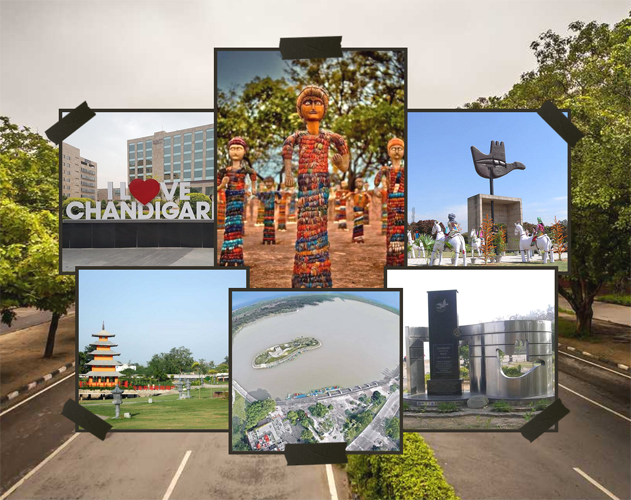 Chandigarh, envisioned as the dream city of India's first Prime Minister, Pandit Jawaharlal Nehru, was designed by renowned French architect Le Corbusier. Nestled at the base of the Shivalik Hills, it stands as a remarkable example of 20th-century urban planning and modern architecture in India. Conceived to replace Lahore, the former capital of Punjab, the city's development began in 1948 under the Government of Punjab, with support from the Government of India. Its foundation stone was laid in 1952. Following the reorganization of Punjab in 1966, Chandigarh was designated as a Union Territory, yet continues to serve as the capital of both Punjab and Haryana. The city's design is centered around four key functions: living, working, care of the body and spirit, and circulation. The residential sectors represent the living component, while areas such as the Capitol Complex, City Centre, Educational Zone (including institutions like PGIMER, Punjab Engineering College, and Panjab University), and the Industrial Area form the working segment. The transport network is structured around seven types of roads, known as the 7Vs, with an additional V8 route later developed specifically for cyclists. Chandigarh offers several popular tourist attractions. The Leisure Valley, stretching across 8 km, features a series of beautifully maintained parks such as the Rose Garden, Bougainvillea Garden, and Topiary Park. The iconic Rock Garden is a unique artistic space displaying vibrant sculptures and installations crafted from recycled materials salvaged from demolished buildings. Another must-visit spot is Sukhna Lake, known for its serene atmosphere and range of activities, including boating on paddle boats and shikaras, camel rides, portrait sketching, and mechanical bull rides. Visitors can also explore the nearby Bird Park. Additionally, the scenic hill stations of Shimla and Kasauli are located just a short drive away, making them perfect for day trips.
Chandigarh, envisioned as the dream city of India's first Prime Minister, Pandit Jawaharlal Nehru, was designed by renowned French architect Le Corbusier. Nestled at the base of the Shivalik Hills, it stands as a remarkable example of 20th-century urban planning and modern architecture in India. Conceived to replace Lahore, the former capital of Punjab, the city's development began in 1948 under the Government of Punjab, with support from the Government of India. Its foundation stone was laid in 1952. Following the reorganization of Punjab in 1966, Chandigarh was designated as a Union Territory, yet continues to serve as the capital of both Punjab and Haryana. The city's design is centered around four key functions: living, working, care of the body and spirit, and circulation. The residential sectors represent the living component, while areas such as the Capitol Complex, City Centre, Educational Zone (including institutions like PGIMER, Punjab Engineering College, and Panjab University), and the Industrial Area form the working segment. The transport network is structured around seven types of roads, known as the 7Vs, with an additional V8 route later developed specifically for cyclists. Chandigarh offers several popular tourist attractions. The Leisure Valley, stretching across 8 km, features a series of beautifully maintained parks such as the Rose Garden, Bougainvillea Garden, and Topiary Park. The iconic Rock Garden is a unique artistic space displaying vibrant sculptures and installations crafted from recycled materials salvaged from demolished buildings. Another must-visit spot is Sukhna Lake, known for its serene atmosphere and range of activities, including boating on paddle boats and shikaras, camel rides, portrait sketching, and mechanical bull rides. Visitors can also explore the nearby Bird Park. Additionally, the scenic hill stations of Shimla and Kasauli are located just a short drive away, making them perfect for day trips.


